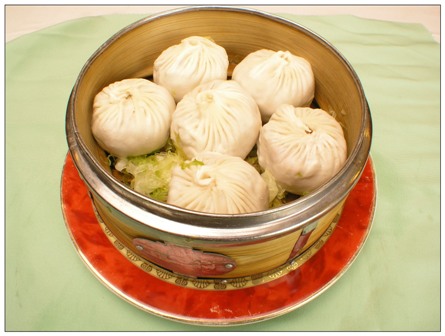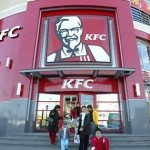Is Flavor Adaption in China a Crucial Step?
Chinese food culture is profound and has a long history, which cultivates Chinese’s fastidious attention to the flavor of anything they eat. Knowing that flavor is the key to sharing a part in the Chinese market , foreign food companies always do a lot of research before they enter the market and continuously promote new products adapted to Chinese flavor. Some of them have received good reaction while great many companies, unfortunately, fail to attract the consumers, which brings the company into a predicament. However, we still can find a rule among so many successful and unsuccessful cases that change of imported food like coffee or fast food does work while entering a market of food already existed like Japan dumplings face great challenges.
Flavor adaption in China is essential for imported food

Imported food is those novelties originating from foreign countries like coffee, chocolate, and fast food. When they first came to China, they were regarded as high-end food because of their relatively high prices. Nevertheless, there were still a lot of people buying them out of curiosity. However, not many people can adapt to foreigners’ loving flavor regardless of the early boom in the market. Accordingly, many foreign entrants take the flavor adaption as their development strategy.
In order to attract more customers who don’t like bitter flavor, almost every coffee producers change their traditional flavor favored by European and American customers and add new flavors as well.In 2012, Nestle changes its coffee ingredient in China to make coffee tastes more like coco milk instead of coffee. Starbucks added fruity taste Frappuccino and other sweet drinks to keep their sales in China. Costa coffee did better in flavor adaption as they even slightly change its offer according to people’s different tastes living in different regions.(For further information about coffee market in China please refer to these two blog posts
Flavor is extremely important for chocolates, but the adaption is easier compared with coffee because most of the products tend to be sweet. As a result, bitter black chocolate containing more than 70% cocoa can hardly be seen in the market. Instead, M&Ms firstly launched by Mars in China have gained popularity, for this kind of chocolate products is more like candy.FERRERO ROCHER is accepted widely as it’s more like Chinese cake and desert.(For further information about chocolate market in China, please refer to the blog Market of chocolate in China)
Fast food industry like KFC and Macdonald’s is constantly localizing its menu in China to cater for the need of Chinese consumers. For example, KFC is combining Chinese traditional deep fried stick with hamburgers when they design the breakfast. They even offer rice accompanied by vegetables and meat as a balanced diet. Macdonald’s also invents a Si-Chuan pulled pork burger to attract those who like strong spicy food. Both KFC and Macdonald’s now are always crowded at the time of the meal in China.
Snacks food with different flavors caters for various groups of consumers
Snacks food like candies, biscuits or chips needs rich flavors to cater for different consumers. Recent years, Chinese consumers are getting tired of the tastes existed in the market. XUFUJI whose sales decline in 2014 is designing the new kind of candy. Kraft is adding the fruit taste, tea taste and birthday taste to Oreo so as to boost the sales. Lay’s in China has the taste of lemon tea, cucumber and even lobster considering Chinese flavor. Rich flavors of one product help to improve the sales as consumers will always find their own favorite flavor, which effectively improve the product’s favor. The psychology of trying all the tastes can also increase the sales. Thus, companies of snacks food need constant innovation of flavor so that consumers won’t get bored and have more choice.
Traditional food market doesn’t fit to food adaption
In contrast to the strong ability to accept brand new food, Chinese seem to be conservative when it comes to related Chinese traditional food. Actually, traditional food like tea or dumplings is more than food. They are a kind of precious culture throughout Chinese daily life. For instance, Chinese can get much aftertaste when they drink just one kind of tea no matter it’s black or green. Tea with simple and single flavor brings them a sentiment of calm. This is the reason why Coca Cola’s three tea beverages all faced a major setback. Japanese dumplings also failed to get in for the reason that most Chinese people are accustomed to dumplings cooked in boiled water instead of fried dumplings. In fact, the localization of foreign food corporation is a double side blade. As for traditional food market, the best way is to keep their unique characteristics because the custom is important.
If you enjoy reading this article and would like to know further about the Chinese market, contact us!















